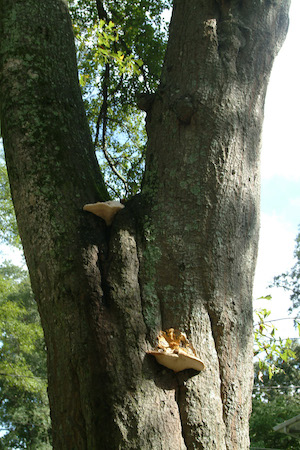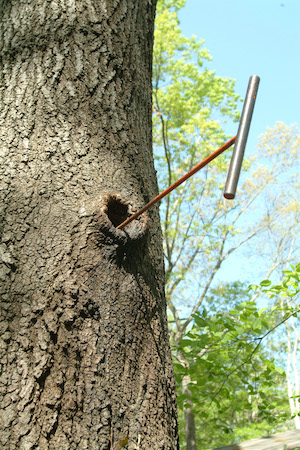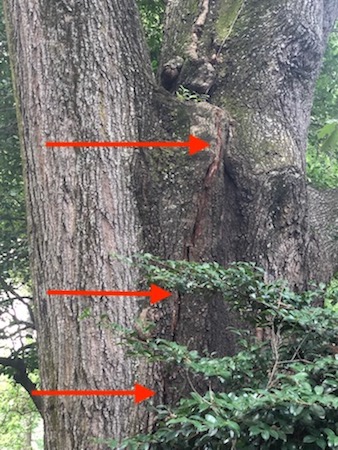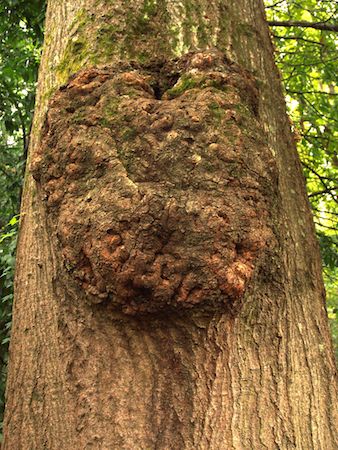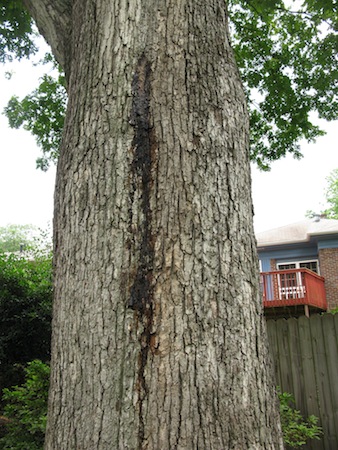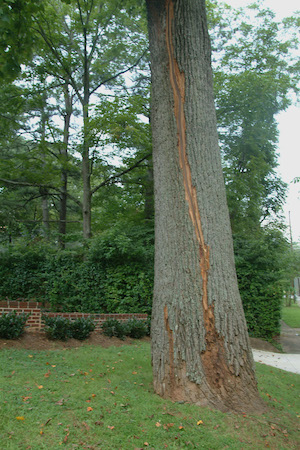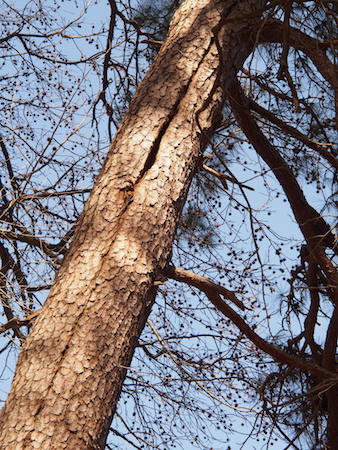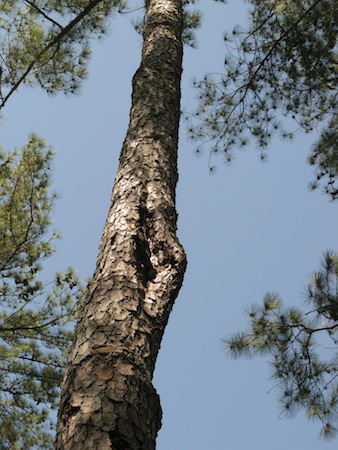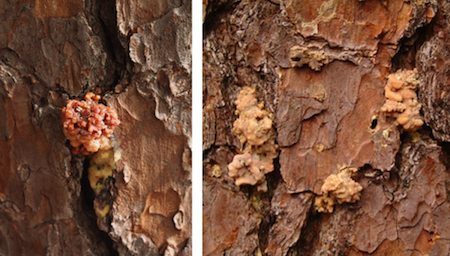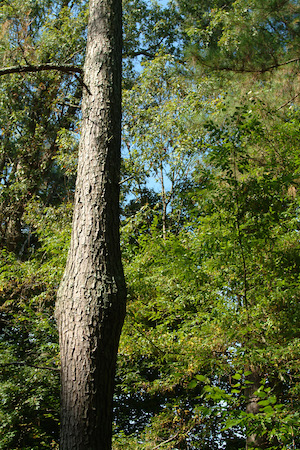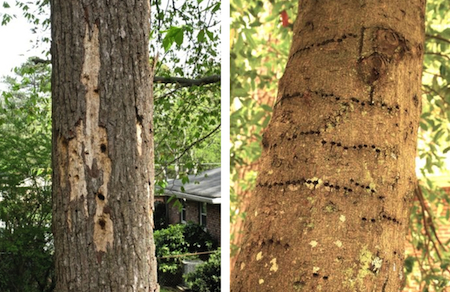Page 4 of 6
Zone 3: The trunk
The trunk holds up the tree and supports the massive weight of its branches. Inspect the trunk thoroughly.
- Cavities can be dangerous, depending on their size, where they're located on the tree, and how deep they are. If there is a cavity above eye level, a "climbing" (aerial) inspection may be needed to find out how deep it is and if there is decay.
- Cracks and splits in the trunk are extremely dangerous. If there is a crack or split in the trunk, the entire tree could fall or break apart at any time.
- Missing bark (or areas where bark is falling off) usually signals a dead section. Look for places on the tree’s trunk where there is no bark, the bark is falling off, or the bark is discolored. Missing bark can also indicate a surface wound, infection, or a fungus attack.
- When ants and beetles attack a tree, they leave very fine, light-colored sawdust (“frass”) that is easy to see. Ants cutting into decayed wood leave coarse shavings. Pine bark beetles attacking a pine tree leave “pitch tubes” that resemble marble-sized balls of light-colored sap.
- A long streak of missing bark coming down the tree usually means the tree was struck by lightning. It's possible that a tree can recover from this, but if the leaves or needles turn brown after several weeks, the tree has died. Call a Certified Arborist immediately if lightning has struck a pine tree near the home. Pine bark beetles can smell oozing sap from miles away. Spraying the tree will help deter an attack, which will certainly kill the tree if the lightning didn't.
- Trees with 2 or more trunks sometimes crack and split where the trunks connect. Strong connections appear as a “U” shape; weak connections resemble a tight “V” shape. Sometimes a tree adds layers of wood over the trunk connection to strengthen a crack. After a windstorm, look at the connection in the tree where the trunks meet. Use binoculars if the connection is high up. If there is a lightly colored line that contrasts to the natural dark bark color, you are probably looking at a fresh crack. The tree may be in the process of splitting apart. Consider this situation an emergency.
If you see any of the above conditions in your tree, call a Certified Arborist immediately to determine if your tree is stable enough to leave standing or whether it should be removed.

